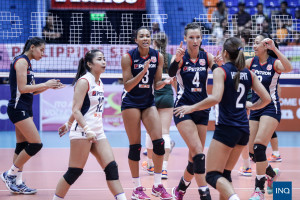The Rizal Memorial Sports complex evokes memories and at the same time provokes passionate arguments.
The aging complex has so much history in its halls and walls that if they could speak, they would talk about times when the Filipino athletes were at their best. Long before other Asian countries dedicated more discipline and funds to improve their athletes, Filipinos were naturally agile and gifted for the sports mostly taught by the American occupiers.
The track oval, swimming pool, basketball court, baseball field, tennis courts and other facilities have undergone many facelifts and repainting. The complex survives despite a more populated metropolis, gobbled up by all kinds of pollution.
Nostalgia is naturally evoked as many who were born before the 1980s either played or watched sports events at Rizal. The small basketball venue was the site for many college and international games. Southeast Asian Games heroes played on the tennis courts and swam to victory in the pool. Track stars like Lydia De Vega, Elma Muros and Isidro del Prado blazed to glory on the oval.
It simply isn’t easy to tear down memories, especially those shared collectively by a nation.
Of late, there have been talks of the complex being put up for sale for the creation of shopping centers so that commerce and industry may generate income for the city of Manila. Heritage advocates and sports enthusiasts have argued that it remain untouched, pleading to preserve valuable parts of the country’s culture and history.
Maybe a viable common ground can be arrived at. It’s clear that Rizal Memorial is no longer feasible as a training center. It’s in the middle of a congested city, not exactly the most ideal venue to train national athletes. The plan to build a training center outside of the city should be pursued.
Then maybe the complex need not be completely torn down. Some commerce may still be generated while keeping the nostalgic portions of the façades and walls. In particular, the baseball wall where the names of great players who hit home runs on the Rizal diamond can be kept. The old baseball scoreboard need not go but only has to be spruced up to make it younger while staying delightfully old.
The complex could still be a venue for many sporting events, both for collegiate and commercial league games. It can also remain a public exercise area, in the same vein that the Marikina sports center allows residents to jog and walk there.
Sports must continue to grow and stay in step with the times but it should not be at the expense of saying farewell to important theatres of our athletic history. Some preservation should be encouraged while keeping an eye on honing better athletes in alternative places.


